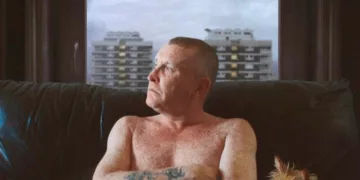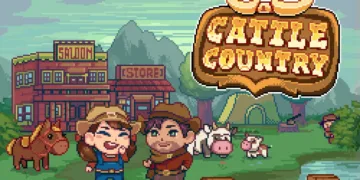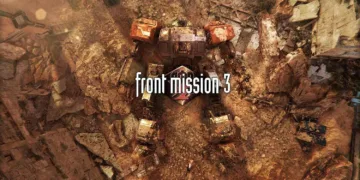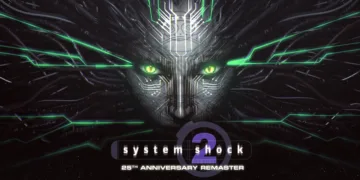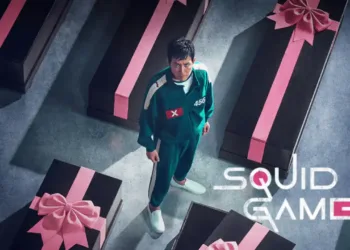Alessandra Celesia’s documentary The Flats offers viewers a glimpse into everyday life in New Lodge, a housing estate in Belfast, Northern Ireland. Through her lens, we meet residents still coming to terms with decades of violence during the Troubles. Celesia, an Italian filmmaker based in France, immersed herself in this community to share their personal stories.
The film premiered at the Copenhagen International Documentary Film Festival, where it shone a light on the intergenerational trauma still affecting people in New Lodge. Now, over 25 years after the Good Friday Agreement brought peace, remnants of the past linger. Through intimate character portraits and reconstruction scenes, Celesia shows how memory and identity remain entwined with history.
We’re introduced to Joe McNally, haunted by witnessing his uncle’s murder at age nine. Therapy sessions and revisiting the past through dramatization become a means for Joe to process long-buried grief. Elsewhere, a talented young singer finds empowerment in sharing her experience with domestic abuse. Their resilience underscores the community’s spirit, despite facing challenges like substance misuse and fractured social bonds.
Pulling back the curtains on private refuge, Celesia brings layered humanity to each character. With nuance, she illustrates their navigation of new beginnings amid change, from demographic shifts to the opiod crisis. Through it all, bonds of place and people offer hope—an essence of home that transcends all that time may bring. In the Flats, recollection becomes a window into reconciliation as lives intersect with history in transition.
Faces of the Flats
At the heart of The Flats are the residents of New Lodge and their gripping personal stories. Central among them is Joe McNally, who has known more than his fair share of hardship. As a young boy, Joe bore witness to the murder of his uncle at the hands of loyalist paramilitaries. Ever since, he’s lived with the memory seared into his mind. To this day, Joe sees the world through the eyes of that nine-year-old boy who lost so much.
Living in the shadow of the past takes its toll. Joe struggles with anger and resentment that surge to the surface. While talented in arts and crafts, he spends much of his time raging against the world. Yet deeper still lies a well of pain seldom shown to outsiders. Through therapy scenes and reenactments of the past, we glimpse the shattered soul beneath the gruff exterior.
Joe isn’t alone in carrying scars from those turbulent times. We meet Jolene, a singer with a gift for touching hearts. But her own battles with abuse remain close to the surface. Through song, Jolene finds the expression that healing requires. Beyond the trauma’s hold, her spirit shines with resolve.
Others, too, harbor wounds that persist long after ceasefires. Angie lived through moments no one should face. Now she works to lift up others with troubles of their own. Even the faintest echoes of a dark history trigger flashbacks for Gerard, whose apartment brings it all flooding back.
Change happens slowly in these flats. Over time, though, cracks appear in the armor people wear. Joe allows a glimmer of the child within to show in moments of recreating his past. Jolene grows more convinced that better days can be built. As for all who call this place home, the fight continues to find peace and purpose among the pieces left behind when violence tore their world apart. These are faces that show hope and need not rely on forgetting but can come through facing history—and tomorrow—head-oon.
Weaving Reality and Imagination
Director Alessandra Celesia employs innovative techniques in The Flats that provide deeper insight into her subjects. She meshes reenactments within the documentary format to striking effect. Rather than using dramatization alone, Celesia smartly pairs it with interviews and verite footage.
This blending technique allows viewers to understand characters on a richer, more visceral level. When Joe describes his uncle’s murder as a child, it’s deeply moving. But Celesia goes further—she has Joe reenact the long-ago wake. We not only hear about Joe’s trauma; we see his memories given life. Through skillful direction, Joe becomes both the grieving boy and the man reliving that moment.
Celesia similarly shows Jolene’s abuse by letting her reenact the physical and emotional toll. Beyond descriptions, her pain is palpable. Yet reenactments never overshadow the real people or events they depict. They serve to vividly complement, never replace, candid portraits of daily life in New Lodge.
Blending fact and fiction proves invaluable to comprehending how history haunts residents today. When Joe painstakingly stages Bobby Sands’ funeral, we feel the iconic figure’s powerful influence. As Joe climbs into the coffin, it’s as if he inhabits not just Sands but also his own restless psyche.
Through such techniques, Celesia transports viewers inside her subjects’ turmoil. We experience viscerally how the Troubles refuse to remain in the past. Her direction fuses recreations seamlessly into the present-day reality of a community still scarred by violence, showing trauma’s long ripples through time.
By blending the real and imagined, Celesia translates turbulent emotions in a viscerally engaging way. Through her storytelling wizardry, The Flats illuminates how memory shapes identities, communities, and the continuous work of healing from even a not-so-distant history whose effects can’t be wished away.
Facing the Scars of History
The Flats delves into heavy yet profoundly human themes. Chief among them is enduring the traumatic impacts of violence through the generations. For Joe and others, peace exists uneasily with pain that refuses to fade.
Nightmares of the past blend with present struggles as the community grapples with addiction and unfinished business. Joe remains haunted by witnessing his uncle’s murder at a tender age. Memories torment me as forcefully as the day it happened.
Trauma casts a long shadow, as shown through Jolene’s ongoing battles with abuse. Her journey exemplifies transforming trauma without forgetting its lessons. Music proves an outlet for expressing scars too deep for words.
Grief also remains raw for many years after a loss. Joe finds catharsis in enacting old funerals but accomplishes acceptance through hard reflection rather than denial or rage. His imaginings of hunger striking illustrate grasping for ways to overcome helplessness.
Celesia depicts how memory weaves individual stories into a community’s fabric. New Lodge’s trials emerge from a troubled history, yet residents forge solidarity and strength. They shoulder the responsibility of safeguarding those who came before and pave the road ahead.
Substance abuse plagues some as a salve for wounds that time can’t fully heal. But others break cycles of harm through empathy, accountability, and healing past fractures. Signs of improvement foster diligent hope over passive waiting.
The Flats illuminate varied journeys—none easy or complete. But its characters demonstrate light that surmounts darkness through resilience, compassion, and resolve to let tomorrow become happier than yesterday. Their trials speak to all working to reconcile what was with what can be.
Unity Through Adversity
The Flats bring the community of New Lodge to life in a way few documentaries achieve. Celesia depicts a group of people bonded as much by shared struggles as history in this place.
New Lodge emerges as a tight-knit support system, even with cracks showing. Residents lean on faith and each other during hard times. Scenes of choreographed prayer in the small grotto radiate practiced routine and comfort in ritual.
Their strength comes through enduring in spite of pain. Jolene’s talent uplifts with songs of life in these flats. Her voice carries a warmth that transcends walls. Substance abuse hurts some, yet most preserve compassion. They express care for each other regardless.
Division lingers from conflicts passed, though uniting proves stronger. Joe’s anger seems solace in isolation until finding purpose through openness. Sharing burdens with counselor Rita helps him bear his load and discover renewal where rage once festered.
Support flows both ways as we all seek healing. Jolene and others empower each other, breaking harm’s hold. Their victories inspire because they were fostered through community, not despite it. Problems stem from love for places and people, motivating solutions.
New Lodge endures due to bonds that persevere over time. Challenges show humanity in all its frailty and fortitude. Together, they remember history as a lesson, not a sentence, starting new chapters with hard-earned wisdom and hope for days ahead unfettered by ghosts of the past.
The strength of this community shines through small moments of joy, empathy, and resilience against pain that are renewed daily. Their portrayal suggests that light, which defeats darkness, comes from faces that reflect it back to each other.
Portals to the Past
Celesia guides viewers through this community’s history with care. Her lens sees residents as whole people, not symbols, portraying struggles and hopes with equal care.
Archival clips immerse us in New Lodge years ago. Their cool, distant tones feel like impressions preserved yet intangible, ghosts lurking at stories’ edges. As scenes shift to present bright clarity, a subtle contrast hints at what lingers unseen.
Tones melt seamlessly as reenactments unfold. We follow Joe as he relives childhood through another’s eyes, gaining clarity while respecting memory’s fragility. Rarely do such private moments be recreated so authentically, honoring humanity above informing.
Visual ties between the past and present give fleeting moments lasting gravity. Faces age, but familiar places endure, from chapel nooks to looming high-rises. In revisiting each space, a deeper understanding emerges than facts alone could convey.
Subtlety means the impact lingers. Thoughtful direction invites us in without forcing conclusions. We see a community navigating loss continually, finding purpose through solidarity. By capturing scars’ reality with such empathy, hope emerges that understanding might outlive division’s ghosts. Celesia opens portals between eras through which healing might flow both ways.
Honoring History’s Living Legacy
The Flats illuminate how turmoil leaves scars cutting deep through generations. By focusing intimately on figures like defiant yet anguished Joe, we grasp struggles that statistics coldly conceal.
We see pain resurrected when old wounds are probed. Yet empathy prevails as residents rebuild lives from rupture’s fragments. Their resilience inspires them as daily duties and joys are pursued against hardship’s backdrop.
While revisiting the past, this film navigates its legacies with care. Dark episodes are neither glorified nor reduced to lessons, but shown as shaping lives’ complex textures. In sharing personal triumphs and tragedies, a community emerges with dignity restored.
Celesia gives viewers insight that broad history often obscures—how conflict lives on not just in memorials but in hearts. Her camera watches sensitively as people honor difficult memories by creating new ones. By showcasing New Lodge as more than an aftermath but a vibrant home, a future of understanding is kindled.
The Flats stands as a document of a place and time, yet one transcending both. It proves that though wounds may never fully heal, from them can grow compassion, connecting all people to each other. Some wounds’ legacies are living ties, reminding us of our shared humanity.
The Review
The Flats
The Flats offers an intimate look at the intergenerational impacts of conflict, honors personal struggles through empathy, and inspires with glimpses of resilience. Celesia crafts a moving tribute to a community navigating history's complex legacies. The Flats is a poignant documentary that lingers in the memory long after viewing.
PROS
- Intimate character portraits that showcase humanity
- A subtle yet moving exploration of intergenerational trauma
- An evocative blend of archival and new footage
- Hopeful messages of resilience and community solidarity
CONS
- At times, jumps between stories abruptly
- It could have delved deeper into some political issues.
- Tone feels a bit distant when addressing pain points.
